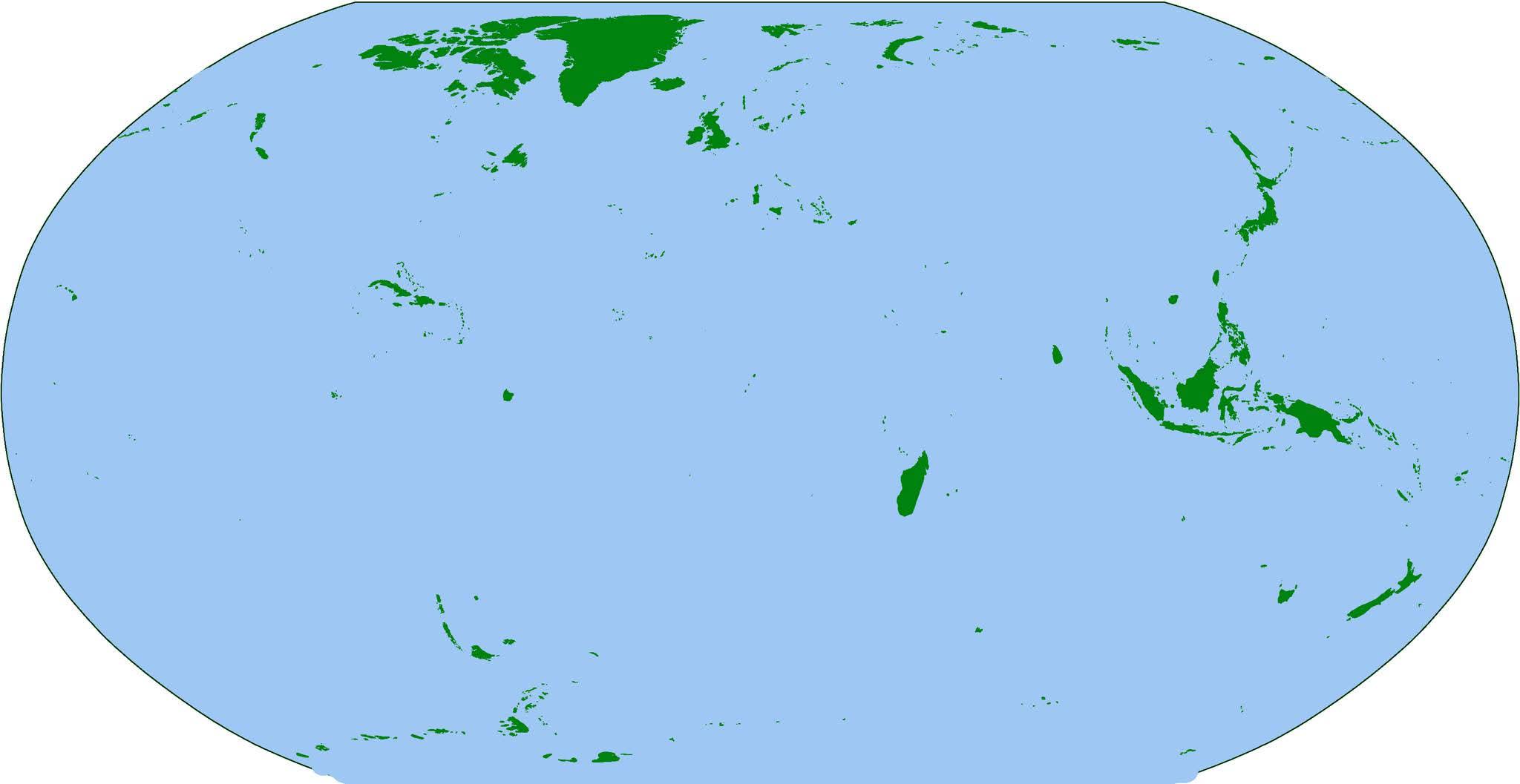Map of the World's Islands


Marcus Rodriguez
Historical Geography Expert
Marcus Rodriguez specializes in historical cartography and geographic data analysis. With a background in both history and geography, he brings unique...
Geographic Analysis
What This Map Shows
The visualization titled "The Earth... But Just Islands" presents a unique perspective on our planet by isolating and highlighting only the islands scattered across the globe. This approach allows us to focus exclusively on these landforms surrounded by water, revealing the sheer diversity and distribution of islands worldwide. From vast archipelagos to tiny specks of land, this map showcases how islands are scattered throughout oceans, seas, and lakes, each with its own unique features and characteristics.
Deep Dive into Islands
Islands, by definition, are land masses that are surrounded by water. They can vary dramatically in size, climate, and ecosystem. Interestingly, islands are classified into several categories: oceanic islands, which are formed by volcanic activity and rise from the ocean floor, and continental islands, which are part of continental shelves and are connected to continents by shallow waters.
Have you ever wondered why certain islands have more biodiversity than others? This is largely due to their geographical location and environmental conditions. For instance, the Galápagos Islands are renowned for their unique species, a result of their isolation and varied habitats. In contrast, islands like Greenland, which is the world's largest island, have harsher climates that limit biodiversity.
Islands also play a crucial role in global culture and history. Many island nations, such as Japan and Indonesia, have rich traditions and histories shaped by their maritime surroundings. They often serve as critical points for trade and cultural exchange. According to the United Nations, there are over 700 million people living on islands, highlighting their significance not only in geography but also in human societies.
Moreover, islands are vital ecosystems that support unique wildlife. Coral reefs surrounding many tropical islands provide habitat for countless marine species, and their health is crucial for the overall biodiversity of our oceans. Islands often face threats from climate change, including rising sea levels and increased storm intensity, which makes understanding and preserving these areas more important than ever.
Regional Analysis
When we break down the islands by region, distinct patterns emerge. The Caribbean, for example, is home to a vast number of small islands, each with its own culture and environment. Countries like Cuba, Jamaica, and the Bahamas offer diverse ecosystems ranging from lush rainforests to coral reefs. Interestingly, the Caribbean islands are also prone to hurricanes, which can dramatically reshape their landscapes and impact local economies.
In the Pacific, island nations like Fiji and Samoa showcase a different environmental and cultural context. These islands often feature volcanic landscapes and are known for their vibrant marine life. The Pacific Islands are also facing significant challenges due to climate change, with rising sea levels threatening their very existence.
Meanwhile, the Arctic region features islands like Greenland and the Svalbard archipelago, which are characterized by their polar climates. These islands are witnessing rapid changes due to global warming, impacting traditional ways of life for indigenous communities and affecting global sea levels. The contrasting climates and ecological characteristics across regions underline the diversity of islands and their unique environmental challenges.
Significance and Impact
Understanding the geography of islands is vital for multiple reasons. Firstly, they are crucial for biodiversity and serve as habitats for many unique species. Secondly, islands often have significant cultural and historical importance, shaping the identity of the people who inhabit them. Thirdly, as climate change continues to pose a threat to their existence, the fate of these islands is a pressing global concern.
What's fascinating is that many island nations are at the forefront of climate change impacts, serving as early warning signs for the world. The plight of low-lying islands such as the Maldives or Tuvalu, which face the very real threat of becoming uninhabitable, emphasizes the need for global action against climate change.
In conclusion, the map of the world's islands not only showcases the geographical diversity of our planet but also serves as a reminder of the ecological and cultural significance of these unique landforms. As we navigate the future challenges posed by climate change, understanding our islands' geography, ecosystems, and cultures will be more important than ever.
Visualization Details
- Published
- September 28, 2025
- Views
- 52
Comments
Loading comments...